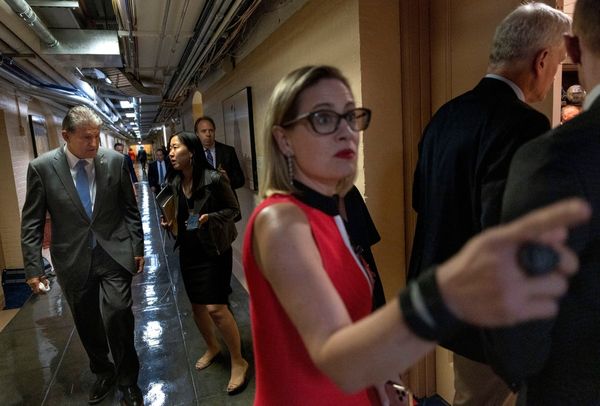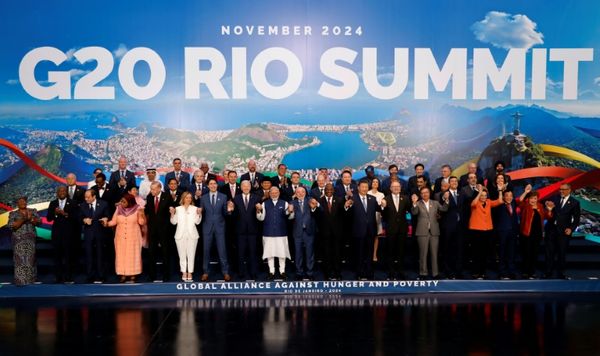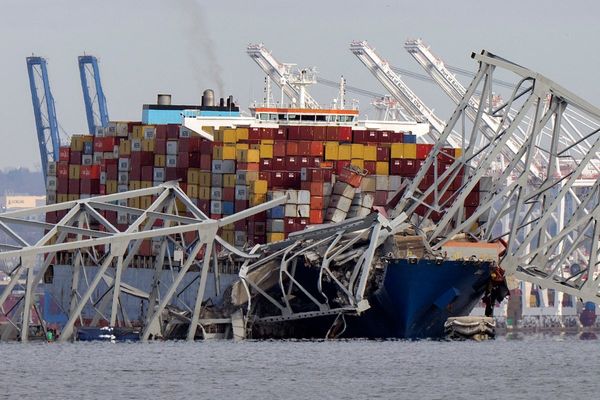As Amazon prepares to debut its long-delayed Prime Air drone delivery service, it's also showing off a smaller, quieter drone that will be ready in 2024 and could be making regular deliveries in major cities by the end of the decade.
Why it matters: Consumers want their stuff fast, and under Amazon founder Jeff Bezos' vision, they could get it delivered in as little as 30 minutes while helping the environment by taking CO2-emitting trucks off the street.
- But a host of technical and regulatory hurdles stand in the way, which is why drone deliveries in the U.S. are progressing slowly.
Driving the news: Amazon showed off its next-generation drone at a recent event near Boston to highlight the future of delivery.
- The 80-pound hexagon-shaped aircraft, about 5½ feet in diameter, is nimble enough to make deliveries in highly populated areas such as Boston, Atlanta and Seattle.
- It'll be more capable and less intrusive than the model Amazon is using in its Prime Air service, which will begin in two markets — Lockeford, California, and College Station, Texas — in the coming weeks.
- By the end of the decade, the company's goal is to deliver 500 million packages a year by drone in cities, Amazon Prime Air vice president David Carbon told reporters.
Details: The new aircraft, dubbed MK30, has a longer range and can fly in more types of weather — including light rain — than the drone it'll use in the near term.
- It also has new "sense-and-avoid" safety features that allow it to operate at greater distances while skirting other aircraft, people, pets and obstacles.
- Custom-designed propellers reduce the perceived noise by 25%, Amazon said.
- Thousands of items could be eligible for drone delivery as long as they fit in one box and weigh less than 5 pounds total.
Zoom out: Amazon has been pursuing drone delivery for nearly a decade, but the program has been beset by delays and internal strife, as Bloomberg reported earlier this year.
- It's lagging behind Walmart, which says it's expanding its DroneUp delivery network to 34 sites in six states.
- Other players, including Zipline and Google-owned Wing, have also begun drone deliveries for hospitals and retail partners such as Walgreens.
How it works: I donned virtual reality goggles at a recent Amazon media event to see how the service would work:
- An Amazon employee loads a shoebox-shaped package into the drone and secures it before stepping away.
- The drone takes off vertically, using six propellers.
- Once in the air, the drone rotates to a forward position and flies at up to 50 mph.
- Upon arrival, the drone descends, scans the area to make sure it's clear, then drops the box from a height of about 12 feet.
Of note: Amazon says that special sturdy packaging will protect fragile purchases. But other drone delivery services lower the bundle with a tether or parachute.
- Either way, customers aren't allowed to stand under the drone.
What's next: There's still a lot of work to be done before drones start zipping around major cities.
- The Federal Aviation Administration needs to issue new rules that'll let drones fly beyond the visual line of sight of the operator.
- And new traffic management technologies still under development need to be finalized to ensure drones don't crash into one another.







